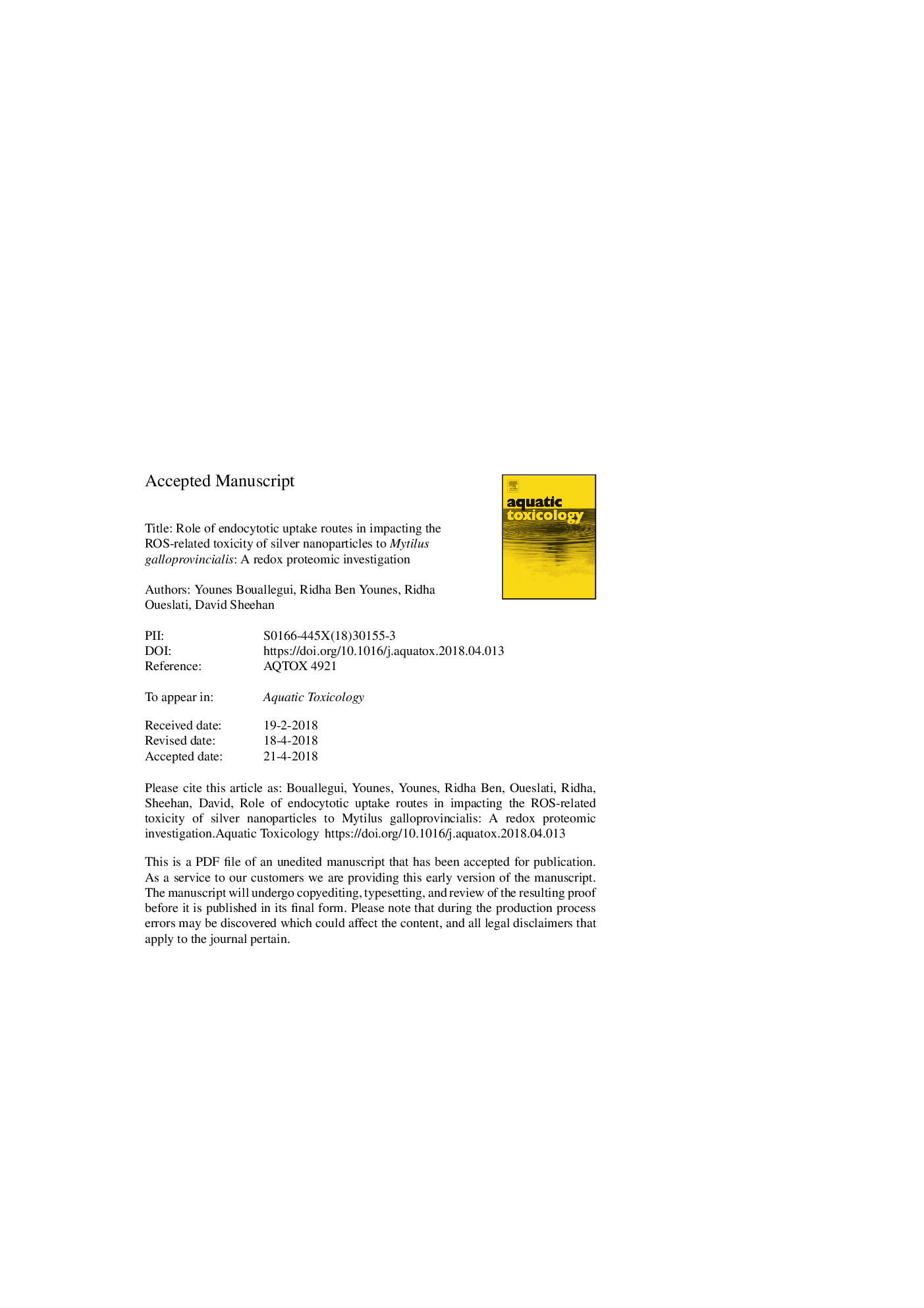| Article ID | Journal | Published Year | Pages | File Type |
|---|---|---|---|---|
| 8883689 | Aquatic Toxicology | 2018 | 27 Pages |
Abstract
Oxidative stress is often implicated in nanoparticle toxicity. Several studies have highlighted the role of internalization routes in determining nanotoxicity. Here, we investigate how two endocytotic mechanisms (clathrin- and caveolae-mediated) impact on redox balance in gill and digestive gland of the mussel, Mytilus galloprovincialis. Animals were exposed (for 3, 6 and 12â¯h) to two sizes of silver nanoparticles (AgNP: <50â¯nm and <100â¯nm) prior to and after blockade of two endocytic pathways (amantadine blocks clathrin-mediated endocytosis while nystatin blocks caveolae-mediated endocytosis). Redox-proteomic tools were used to determine effects. Our results demonstrate the ability of both sizes of AgNP (<50 and <100â¯nm) to cause protein thiol oxidation and/or protein carbonylation. However, blockade of endocytotic routes mitigated AgNP toxicity. Differential ROS-related toxicity of AgNP to mussel tissues seemed to be linked to tissue-specific mode of action requirements. Cell uptake mechanism strongly influences toxicity of AgNPs in this filter-feeder.
Related Topics
Life Sciences
Agricultural and Biological Sciences
Aquatic Science
Authors
Younes Bouallegui, Ridha Ben Younes, Ridha Oueslati, David Sheehan,
